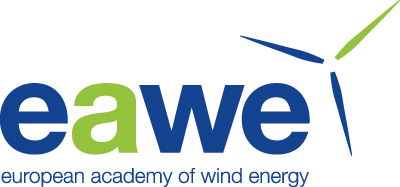Data-Driven Surrogate Models for Real-Time Fatigue Monitoring of Chain Mooring Lines in Floating Wind Turbines
Abstract. As the first commercial floating wind projects are about to enter the market, numerous operational challenges are still to be addressed. One significant challenge is the Operations and Maintenance (O&M) cost, which currently represents 30 % of the overall cost of energy. While reducing this cost is essential for all wind turbines, it is especially critical for floating wind due to the increased complexity and logistical challenges of maintaining turbines in deeper, more remote offshore locations. Consequently, a significant part of recent developments in the wind industry focus on the condition monitoring of mooring systems, which are crucial for the structure’s integrity. Failures in mooring systems are often due to fatigue damage, which can be monitored using real-time methods to improve maintenance predictions and repair planning. However, the high cost of the sensors, along with their reliability issues, such as frequent recalibration needs, can prevent their adoption at a commercial scale. Thus, this paper presents a methodology to develop machine learning-based surrogate models designed to predict, in real-time, hourly fatigue damage accumulation in the catenary chain mooring lines of floating wind turbines. This prediction is based on hourly measurements of five metocean variables: wind speed, wind direction, wave height, wave period, and windwave misalignment. Typically, the literature only accounts for the first three variables, assuming co-linear wave and wind, which can lead to unrealistic failure likelihood predictions for mooring systems. Additionally, the effects of corrosion and mean loads on chain fatigue damage are also considered, as they significantly affect the chain fatigue lifetime. The proposed tool is intended for predictive maintenance applications, which has been identified as a key area for cost reduction in floating wind, and can also be applied to reliability assessment purposes. In this paper, we describe the construction of a site-agnostic synthetic database of metocean conditions and corresponding fatigue damage values. This database is designed to be computationally efficient while also extensive enough to ensure that the surrogate model achieves strong performance. The advantage of using a site-agnostic metocean database is that it enables a simpler implementation while still accounting for the interdependencies of metocean variables, unlike site-specific databases that require deriving joint metocean distributions It also enables testing the fatigue of the same technology developed for different sites. To evaluate the tool’s potential for existing projects, we quantified the uncertainties arising from both the model approximation and the statistical nature of the inputs. The methodology is applied to the mooring lines of the IEA 15MW UMaine semi-submersible. Training data is generated through the postprocessing of tension time-series, extracted from OpenFAST simulations. Results demonstrated that hourly fatigue damage can be predicted using a gradient-boosted decision tree surrogate model, achieving an R2 value of 0.928 with the defined tuning strategy. This limitation in the R2-value is a consequence of the seed-to-seed uncertainty and this can be reduced further with the integration of more realizations. Indeed, from the uncertainty quantification, it was found that the phase resolution is driving the accuracy of the model. The prediction is completed in less than 0.01 seconds, making it suitable for real-time asset monitoring. The model’s strong capabilities in terms of prediction speed makes it also particularly well-suited for surrogate- assisted reliability-based design optimization (RBDO). Unlike deterministic design optimization (DDO), RBDO incorporates design uncertainties by including the reliability index as part of the objective function. Using such surrogate models drastically reduces the computational cost associated with evaluating fatigue reliability during each iteration of the optimization process. Additionally, this approach effectively accounts for the most critical environmental variables influencing fatigue, ensuring a comprehensive and realistic assessment of structural performance under uncertain conditions.
Competing interests: At least one of the (co-)authors is a member of the editorial board of Wind Energy Science.
Publisher's note: Copernicus Publications remains neutral with regard to jurisdictional claims made in the text, published maps, institutional affiliations, or any other geographical representation in this paper. While Copernicus Publications makes every effort to include appropriate place names, the final responsibility lies with the authors. Views expressed in the text are those of the authors and do not necessarily reflect the views of the publisher.




Very interesting and promising work. I would only suggest a very minor editorial change. Specifically, instead of '...unrealistic failure likelihood predictions for mooring systems', I would characterised such likelihood as conservative.